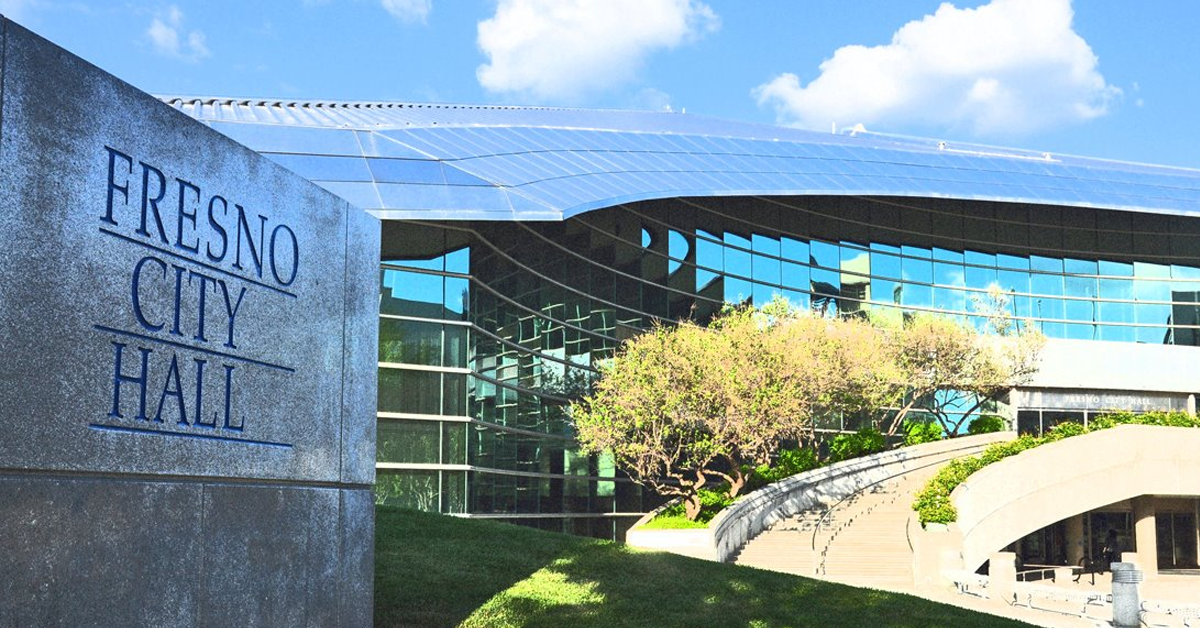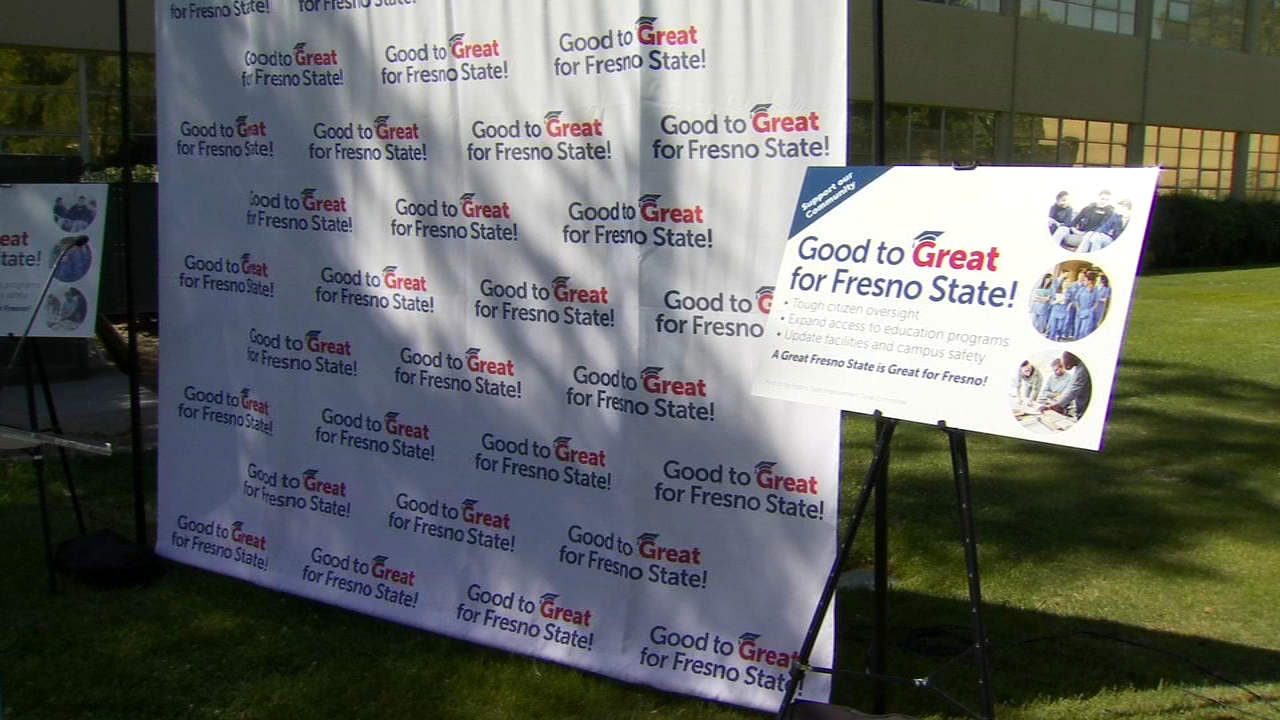City of Fresno officials held a news conference Thursday morning about an unusual infrastructure problem in the northeast corner of town.
Some people living in single-family residences complained about discolored water occasionally coming out of their taps.
The city did some preliminary tests. Turns out the discoloration is caused by stuff in the water – iron, zinc, copper, lead.
One sure way to get the attention of government officials is to discover that a certain level of lead has found its way into daily lives of people. Public health issues trump just about everything.
Fresno’s water as delivered by the city “is safe to drink,” Public Utilities Director Tommy Esqueda said.
City officials called the news conference to get in front of any misconceptions. State officials appreciated the foresight.
“We commend the city for being proactive in their efforts to try to get a handle on what’s going on, and to help the residents to ensure that the water is safe to drink in their homes,” said Kassy Chauhan, senior sanitary engineer with the State Water Resources Control Board.
The board is the city’s water regulator.
We’ve got two stories here.
The first concerns the discolored water. The city will get to the bottom of things, Esqueda said. But here we are, in the tenth paragraph already, and I haven’t told you the cause of the problem or its solution. That’s because the experts don’t know. So, it may be a while before the city gets to the bottom of things.
The second story concerns the methods employed by the administration of Mayor Ashley Swearengin to make sure the media properly understand their assigned role in helping City Hall be “proactive.”
Let’s take the first story in 12 steps, as outlined by Esqueda:
1.) An unknown but fairly substantial number of residents in northeast Fresno began to complain about discolored water coming out of various taps in the house. Thanks to the power of social media, many of them coalesced into a group with a common interest – clean water.
2.) The city learned of this loose knit group. City officials and some of the residents got together in early January. By late January, the city had found folks in 20 houses willing to embark on a testing program.
3.) Testing began with a sampling from five houses. A variety of colors – orange, brown, yellow – marred the water of three of the five houses. Water in these three houses had iron, zinc, copper and lead. Lead, by itself, would not cause the discoloration.
4.) Testing was going on elsewhere. Northeast Fresno gets much of its water from the San Joaquin River. The river water is treated at the Northeast Surface Water Treatment Plant (opened in 2004) near Clovis North High School. This plant was not the problem.
5.) The treated water is moved to the homes through city-owned pipes. The city’s pipes aren’t the problem.
6.) The treated water goes through a meter in front of the house, then through a pipe into the house. This part of the journey wasn’t the problem.
7.) The city found the discolored water both inside the three houses and as it left the houses. The problem is somewhere inside the three houses.
8.) But the exact cause of the problem inside the houses remains a mystery. A second sampling – five different houses – was recently completed. Those results are due any day.
9.) A likely culprit is corrosion. Corrosion of water pipes is a fact of life. Esqueda and Chauhan said hundreds of mandated corrosion tests throughout Fresno over the past quarter-century have shown the city to be consistently within legal standards. But those tests are done on the city’s transmission system. When you get inside a house, the responsibility falls on the owner.
10.) It could well be there’s something about the pipes inside certain houses in Northeast Fresno that, when perfectly fine water hits them, a reaction occurs that causes the leeching of iron, zinc, copper and lead. Esqueda said the discolored water seems to come most often after the household’s system has been dormant for eight hours or so – when people are asleep, for instance. Perhaps it’s that simmering of good water inside flawed pipes that leads to the initial burst of discolored water. Esqueda said the water is fine once the residents let the tap run long enough to clear out all the gunk.
11.) So far only 10 houses have been tested. The geographic area of interest to city officials is bordered by Friant Road on the west, Copper Avenue on the north, Chestnut Avenue on the east and Gettysburg Avenue on the south. That’s a mighty big area. City officials are taking a close look at who built the 10 houses in the two samplings, and the development regulations in place at the time.
12.) Maybe it’s all just a matter of “soft” water vs. “hard” water. Water from Fresno’s aquifer is “hard” – it contains more minerals than the “soft” river water that gets processed at the Northeast Surface Water Treatment Plant. Soft water can really suck stuff out of pipes – in short, corrosion. Esqueda wants to see if sending groundwater to the impacted houses fixes everything. If so, he said, it’s a simple matter of tweaking the processing formula at the Northeast Surface Water Treatment Plant to get everything back to normal. (Normal, in this case, means using river water whenever we can and saving our aquifer.)
David Pomaville, Fresno County Director of Public Health, said City Hall has briefed him on events. He said the levels of lead are “just near the action level.” He said the city is taking the appropriate steps, and his department will keep an eye on things.
There’s no need at this point to test anyone for health reasons, Pomaville said.
And so this particular story takes a pause. City Hall no doubt will call another news conference when another update is warranted.
But the “proactive” nature of Thursday’s news conference – our second story – went beyond the comments of Esqueda and Chauhan.
I arrived at City Hall about a half hour before the 10:30 a.m. start. I spoke briefly with Mark Standriff, the city’s director of communications.
“What’s Tommy going to talk about?” I asked.
“Water,” Standriff said. “And you’d better not bring up X or I’ll ….”
And he proceeded to give me a look like we were on opposite sides in a rugby match. The look was half jest, half serious.
X, in this case, is a certain Midwestern city.
Standriff and I chat often. City Hall politics and journalism create a rough-and-tumble marriage.
I said I understood. But I didn’t make any promises.
Then came Esqueda’s news conference. As I left City Hall’s media room, Standriff caught up to me and, this time with no jest, repeated his warning.
“Damn it, Mark, don’t tell me what to write,” I said.
“Don’t do it!” he said.
Standriff doesn’t want to cause a panic. Who does?
The more I thought about it, the more I realized we’re dealing with an issue for this year’s mayoral campaign.
How will the new mayor manage the news?
Swearengin has taken two distinctly different paths in her seven-plus years as mayor.
She relied during the first five years on Michael Lukens as her public spokesman and liaison with reporters. Lukens was firm and fair. He made about $66,000 a year.
Three things happened in early 2014 after Lukens left. Swearengin began gearing up for a run for state controller (she would lose in the November runoff, but came close). She hired Standriff, who now has a six-figure salary. And she made no bones about wanting someone to aggressively nurture City Hall’s public image (leaving unsaid that a successful effort would do the same for her).
City Hall reporters carried on.
Then, in 2015, shortly before I left The Bee, Swearengin had two of the paper’s top editors come to her City Hall office. The editors, journalists for whom I have the highest respect, told me they were meeting with the Mayor and I was the only topic on the agenda.
The editors returned to the newsroom after a 90-minute meeting. My bosses didn’t tell me much. They didn’t need to. Swearengin was angry about my reporting. I don’t know if she insisted that my head be served to her on a platter. But that clearly was her aim.
(Since the meeting was at City Hall during working hours, I’ve often wondered if a state Public Records Act request would produce a transcript or recording of what Swearengin and the editors said to each other.)
The editors did tell me one thing. One of my stories that really bothered Swearengin had to do with a Police Department grant application. The police were asking for state money to combat public drunkenness, especially underage boozing.
The application, a public document reviewed by the City Council, pulled no punches. Fresno has a serious booze problem, and therefore needed lots of help to fight it.
I wrote a story every bit as colorful as the grant application itself. That got under Swearengin’s skin. My bosses said she told them everybody stretches the truth on grant applications.
My response: Swearengin said the city lies to the state? You listened to Swearengin say the city lies to the state? And the problem is ME?
What’s it going to be, Lee Brand, Henry Perea and H. Spees?
One of you will be mayor come January 2017. You will have four, possibly eight years, of news-managing challenges.
The people have a right to know. The First Amendment isn’t dead. The Internet has forever changed the hierarchy of news production/consumption (if you don’t believe me, go back to the start of this article – everything connected to the water problem got started by a bunch of average people talking to each other on computers and iPhones).
What kind of news-managing/reporter-managing/transparency-managing operation will you insist that taxpayers fund?
Here’s the funny thing about my interview with Pomaville, one of the most important and powerful public officials in the central San Joaquin Valley.
I called him and left a message. He called me back. We talked. We said goodbye.
Neither of us saw a need to mention that Midwestern city X.
Pomaville is Mr. Calm.












Sandriff is a henchman for Swearengin. He walks around bullying and intimidating staff at City Hall. This administration with their lies and cronyism needs to come to an end.
I appreciate the information and the back story politics on the issue. Your stories are always fascinating.
I live in the area of interest (near Maple and Behymer), I’m a renter, and I called my landlord months ago to deal with the water that runs yellowish-orange. He said he flushed it, but it’s not fixed. I’m concerned about the near action levels of the water. I have small children and no idea how this could affect them long or short term. The water doesn’t always look bad. We use a filter for our drinking water, but no one will take a bath, it looks too dirty and there’s sediment.
I’m not sure what to do, but it doesn’t feel right to sit around and wait for the City to figure out who to blame. I suppose I could move, but I will have a fight about breaking my lease, although I will if I have to. Any advice?
George, I am one of those homeowners that has been trying to raise a stink about my gross water since the water treatment plant went online 10 years ago. Since then, the City of Fresno have been delivering bottled water to my home every month. They have tested the water both inside and outside my home and even tested pipes in my home and “claim” to have found no problem. They have stated my water softener system was to blame and advised me to take it “offline.” We’very done that, but out water is still aweful. It discolors our clothing and is difficult to bathe in. I sure hope we find a solution to this problem.
George, I am also one of the homeowners and need to know if there is way to contact the group of homeowners who have the same issue. I moved here 4 years ago, and my hair began falling out, and I have had skin infections. Our water is yellow and smells. My husband changes the water filter often to our shower, but I am concerned for my children. I live by Maple and Behymer. Any suggestions?
There is a northeast community water meeting scheduled for Tuesday, April 26th, at Kastner Intermediate School starting at 5:30 pm. City and State water officials will be there to present their water test results regarding the discolored water and lead contamination, and to address residents concerns. If you have discolored or smelly water, have had breaks in your galvanized pipes or have had your water tested and results indicated lead contamination, please attend this important meeting to voice your concerns.